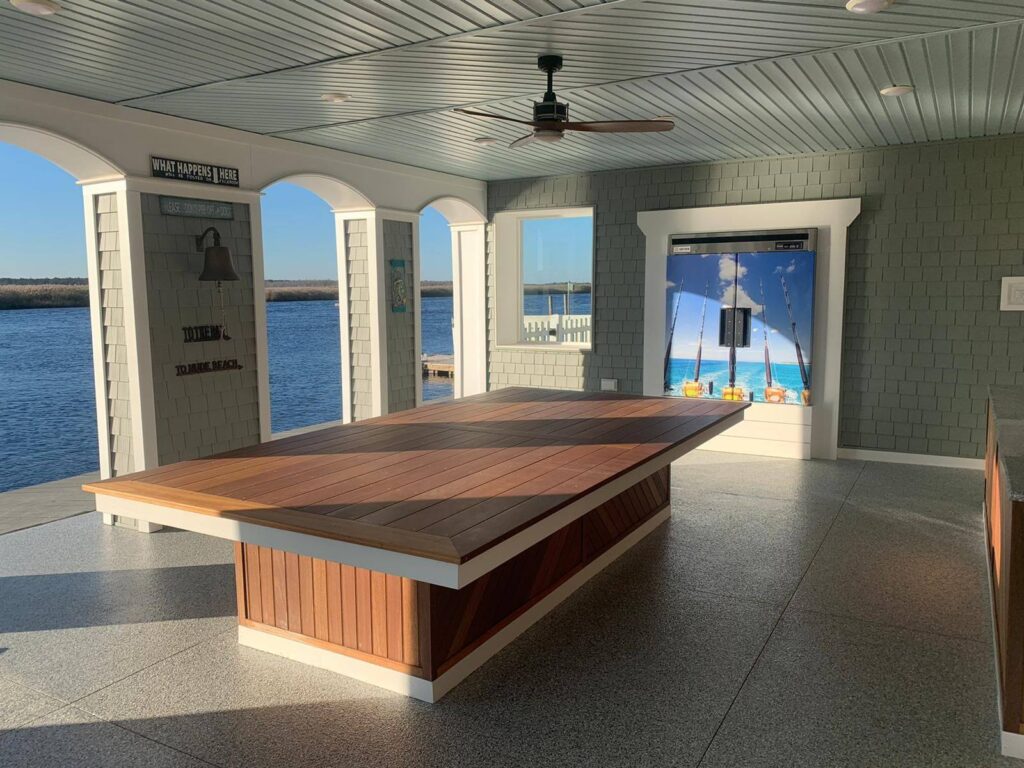People make some exciting memories on their patios in summers and neglect taking care of the same space during winters. It is the most common mistake that people make in the winter.
Just like humans, winters can be brutal on your patio. The frigid temperature can deteriorate your deck and lead to cracks and crumbles on the floor. The best way to prevent your patio in winters is to install concrete floorings or epoxy floor coatings. These floor coatings are very durable and can withstand fluctuation in temperatures without getting chipped and cracked.
Tips to protect your patio floor coatings
We know epoxy and concrete floor coatings are durable and can withstand heavy foot traffic, heavy impact, and wear &tear. However, your patio still needs proper maintenance to stay in shape for the longest time.
Here are some tips to protect your patios as the mercury starts to plummet:
1. Do a careful inspection
The freeze-thaw cycle is the biggest concern when it comes to installing concrete floorings. You can prevent the damage by inspecting minor chips, fine lines/ hairline cracks, and surface chipping &peeling in the concrete. Use a flexible concrete sealant to fix the cracks and fractures. It will bond with the concrete and remain flexible and robust as temperatures rise and fall. If you notice any severe damage, it would be best to hire a concrete coating company to fix the issues.
2. Follow a regular resealing schedule
The patio’s resealing requirement depends on the type of concrete sealer you used at the earlier stage. Most topical sealers last anywhere from 3-5 years while penetrating sealers can last longer.
Consider the following steps to ensure whether your patio needs resealing:
- Contact professionals for concrete coating services in NJ to get information on your sealant’s lifespan.
- You can also test the sealer by pouring water into your patio. If the concrete flooring absorbs water, it likely needs resealing.
- It’s time to consider resealing the concrete if the topical sealer is cracked, peeled, or has lost its color/ shine.
Keep in mind; it’s cheaper to maintain your sealant’s health than repairing and restoring the damaged concrete patio.
3. Practice ice prevention before de-icing
If your patio is freezing over, don’t use de-icing salt to remove the snow. Applying salt to your concrete patio can lead to significant issues, including corroding the rebar in your concrete damaging your patio’s overall strength and safety.
The best winter defense to protect your patio is prevention and salt-free maintenance.
- Remove the snow by shoveling before it can harden into dangerous, difficult-to-remove ice.
- Sprinkle your patio with sand. It will not remove ice, but it will make your patio less slippery.
- You can also use calcium chloride or potassium chloride if you need to de-ice your patio. These forms are slightly less damaging than salt to your patio.
Why is maintenance necessary for concrete floorings?
Concrete is relatively permeable than other floor coatings. If you don’t seal the concrete flooring patio properly, or any crack or chip gets left in the flooring, moisture can travel deep into the concrete’s pores. This moisture can freeze during winters. The expanding ice can pressure the flooring, leading to small cracks and fissures in your patio.
This may lead to:
- Larger cracks (allowing more water to seep in)
- A weaker patio with potentially uneven surfaces (creating a potential safety hazard)
- Concrete surface pieces flaking off
And that’s just the start. Fortunately, homeowners can prevent and repair winter concrete damage ahead of time by hiring floor coating professionals!
Whether you need epoxy or concrete floor coatings for your patio, get in touch with Transylvania concrete coatings today! We have all of your concrete covered. Call us or fill out our online quote form to start your coating process right away.

